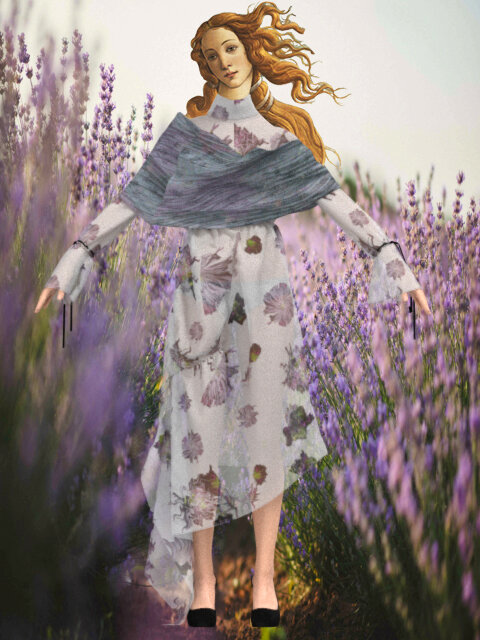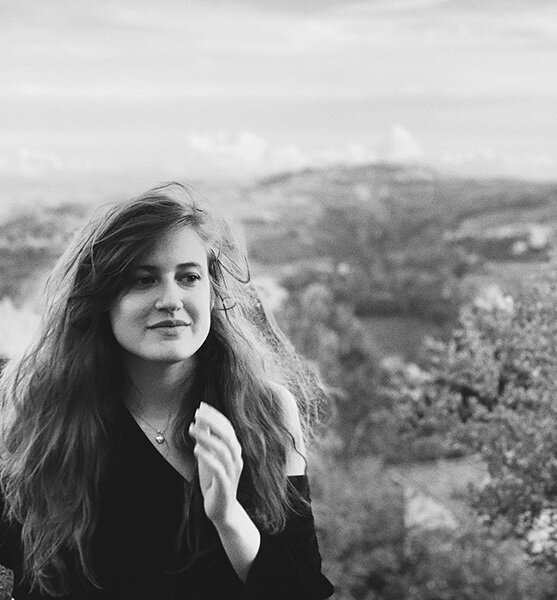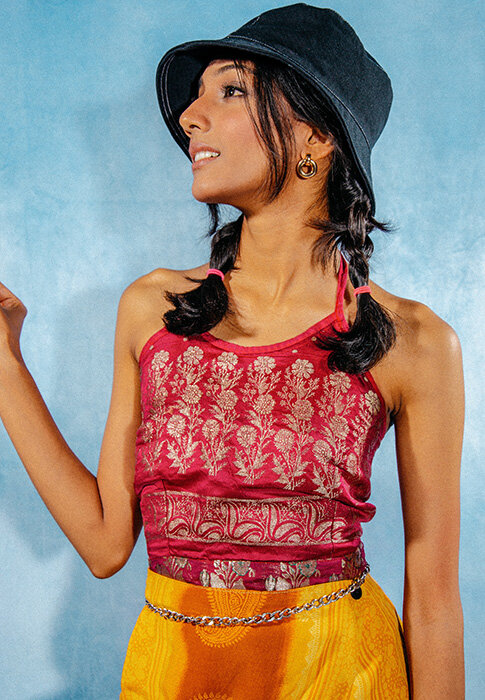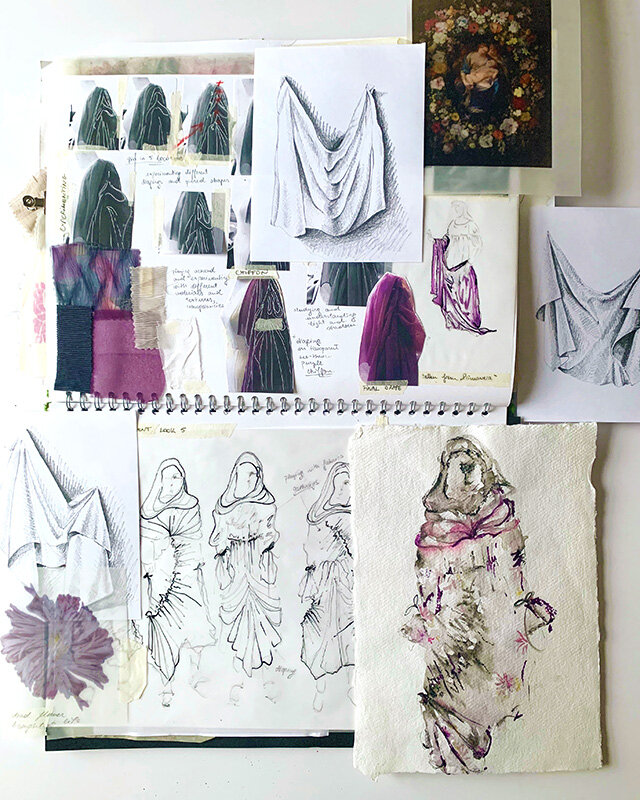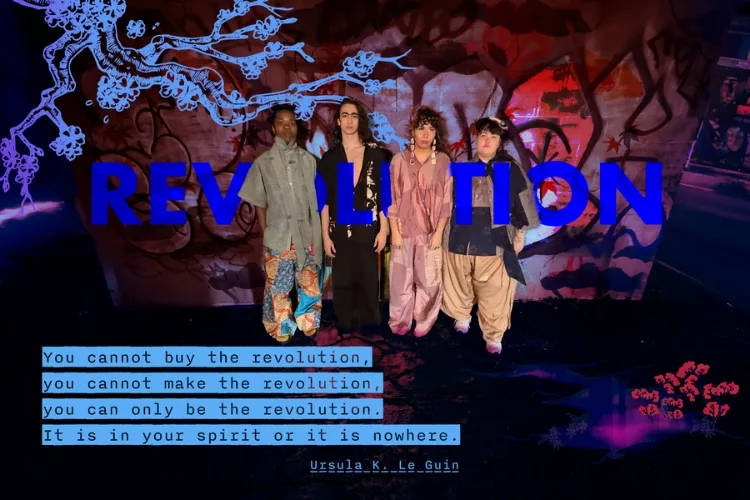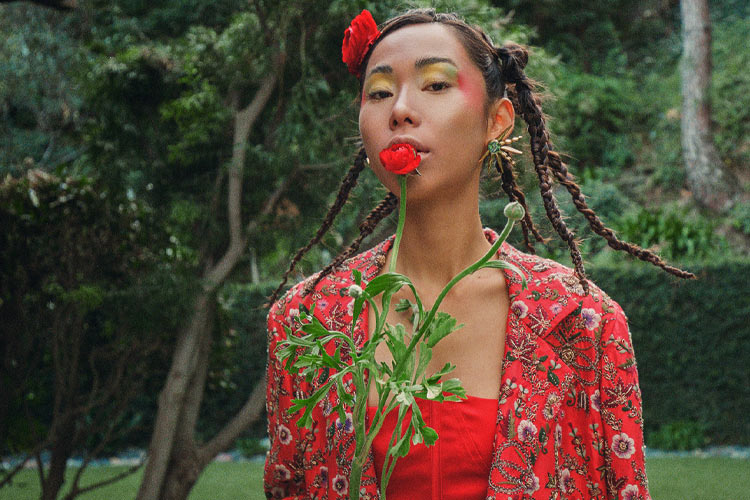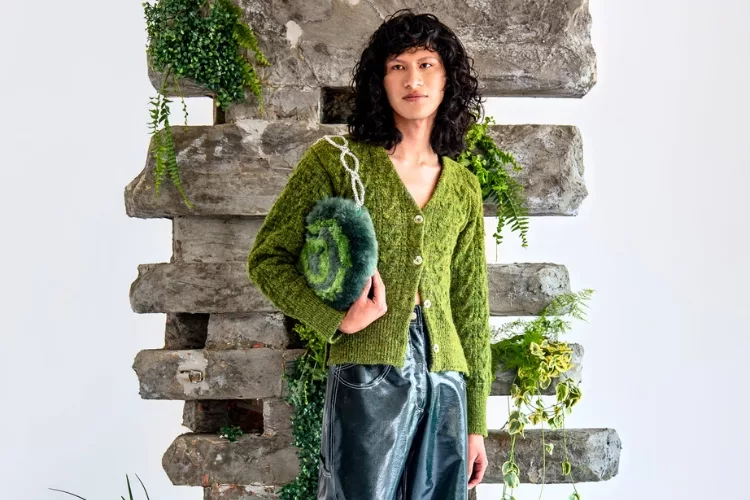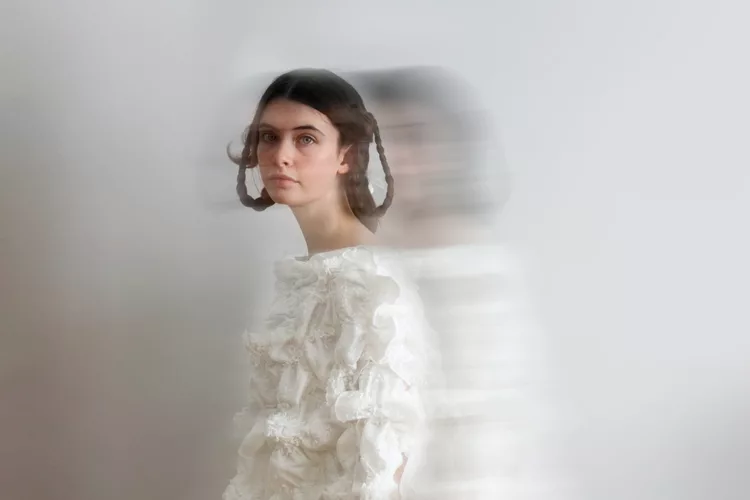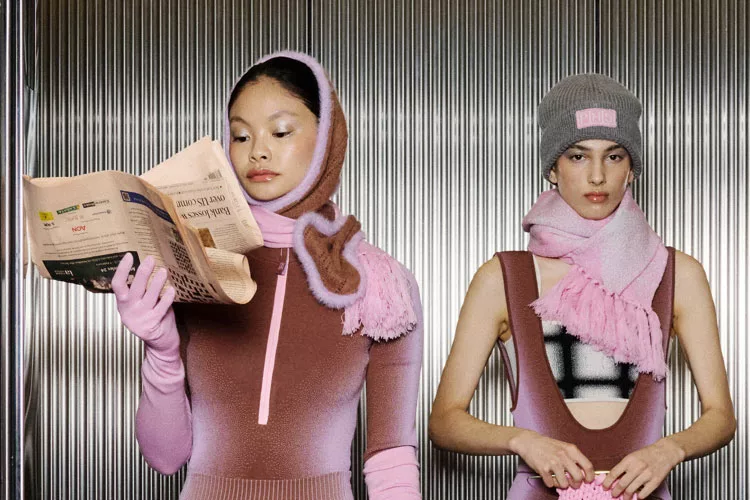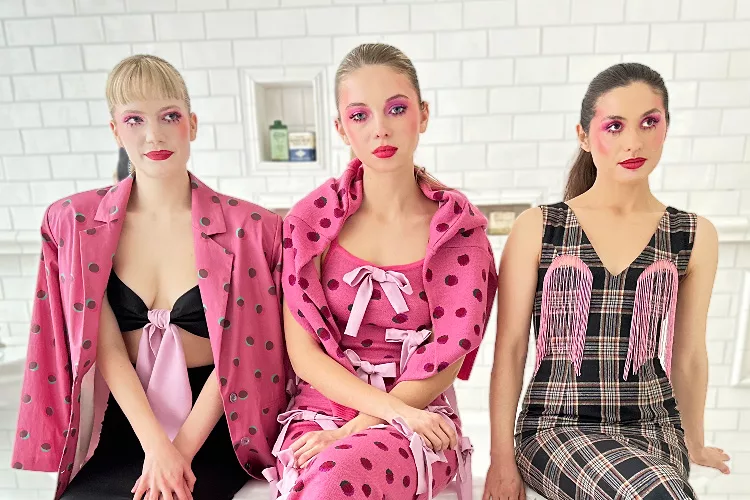The future of fashion is…digital & collaborative –according to recent London College of Fashion grads Diana Canghizer & Ashwini Deshpande
How are we inventing the future? This is the question we ask a lot here at No Kill Magazine. So, we look around for new role models and new ways of doing things.
Diana Canghizer was preparing to graduate last spring from London College of Fashion’s fashion design program and like her classmates was planning on a collection on the runway. But when Covid-19 shut down the world she was not able to access the necessary equipment to finish her final collection. She saw this as an opportunity to join forces with her friend Ashwini Deshpande, an aspiring creative technologist whose work is situated within the fields of digital fashion and XR. Together they turned Diana’s sketches into a digital reality.
We had the opportunity to speak with Diana and Ashwini where they shared with us how their collaboration happened, how opportunities with Microsoft changed their career trajectories, their ideas about the future of fashion and more!
Diana Canghizer
Okay, so you’re college friends and the pandemic hit, and this brought about your collaboration. How did it happen?
Ashwini: After our second year, Diana went straight into her final year, and I went into an industry placement year. I finished my first internship and was planning on starting my second, but the lockdown happened, and a lot of the projects got cancelled.
Because I had time, I started experimenting with CLO 3D, a 3D fashion design software. Diana and I were close at university, and when she approached me asking if I could make one of her garments digitally in 3D, I thought it would be really cool to do that. Her collection is so beautiful!
Ashwini Deshpande
Diana: Yeah, we joined forces and that’s how we transformed my designs into a digital reality. It was quite interesting to see how my clothes would drape on a “real model,” because you can observe how it moves in real time.
As for the inspiration, I was looking a lot into how the woman was perceived in early traditional Western society. I was looking a lot into Biblical stories as well as paintings and different social movements. I was trying to reflect the stereotypical gender limitations that sadly I have experienced. For the garment Ashwini and I created together, I looked a lot into bridal traditions, and I was inspired by Simonetta Vespucci, who is a famous Renaissance model. People can recognise her from different paintings but do not necessarily know her story, and I find quite interesting how she became this muse for male painters, but no one knows exactly who she was.
What is one thing that you learned in the process of creating the collection?
Diana: For the physical aspects of the project, I focused a lot on the textile printing process. This idea of longevity was expressed in the floral print that I made. I collected dead flowers I found around London, then scanned and digitized them to give them a sort of “second life.” What I personally liked about this whole digital creation on CLO 3D, that I’m learning at the moment, is that you understand technical pattern-cutting better. It is actually quite hard to do it in software, but I like that it is even more precise than in real life. In reality, if something goes wrong with pattern-cutting, you can tweak it here and there or do something else or find some other solution. In CAD especially in CLO 3D, you have to be very specific and precise with what you want, otherwise it is not going to render well.
Ashwini: That’s actually very true. When I started learning CLO 3D, I was a bit hesitant. I knew I should have had another year of physical pattern-cutting, and I felt like I may not have had enough of a foundation and could have been rushing into something too quickly that’s more advanced.
But actually, I heard someone say recently that students who are using 3D fashion design software don’t realize how much they’re learning from it –from a physical pattern-cutting point of view.
Now looking back, I have been using the software for about a year now, I do feel like I understand my patterns better. Even if I have to go back and do it physically, I definitely understand the concept behind it better, because it’s just so much easier to experiment with it digitally.
Physically, you might take a really long time to make five patterns, whereas if you’re able to do that in a day digitally, then you’re learning way more, much more quickly. And with Diana’s piece in particular, I think it was really interesting, because before I created her piece, I was basically making all of my own digital garments.
So when you’re making your own digital garments and they’re your own designs, then you can end up altering along the way how things look depending on how they look in the first place. Whereas for me, making Diana’s garment was kind of like working for a client, because she had this design that she had made, and I had to deliver and make it look like what she imagined it to look like.
Diana: I also feel like there is such a huge potential for digital fashion in terms of production, especially from a sustainable point of view. You are able to experiment without wasting paper, fabrics or anything that might be used and discarded in traditional design practices.
In fashion you create so many samples and prototypes, and they do not necessarily have to be in the raw phase, they can actually end up being quite close to the final product but are still considered prototypes. When the piece goes to the “main design director/decision maker,” we’ll call it, that person could easily say no to what you have made, reject your prototypes and ask for what is next.
The number of steps that you take in order to create that prototype or sample creates more waste. But with CLO 3D and digital design, the production can be more sustainable. The fashion industry should definitely invest in this area.
Do you see digital fashion growing in popularity in the future, even once the pandemic settles down?
Ashwini: Definitely! Fashion is not fast to adapt to changes, meaning that something will normally only be done if it has a monetary benefit behind it. I feel like with COVID-19, you have to have that digitized supply chain, otherwise you’re not going to survive –you need some way to track that. With designers and pattern cutters and everyone working from home, it has just accelerated that process so much.
I was recently listening to someone from the biggest company who manufactures for within India (not for exports, just for within consumption). They were saying they used to make about 40,000 final prototypes for trade shows every year, and now because of the pandemic, they’ve switched completely to CLO 3D within one year and they’re making everything digitally.
They are cutting down not only those 40,000 prototypes, but all of the previous prototypes before those as well. For trade shows, obviously you need to fly people in and have all of these huge events that are very carbon-heavy in that sense, and they’ve just completely cut down on that. That’s obviously an exceptional company to have taken it forward so quickly, but I think it’s the direction the industry’s headed in for sure.
Diana: To add to what Ashwini was saying, I have heard that people are scared that this could potentially lead to job loss. I feel like what could happen after COVID-19 situation is a collaboration between digital designers and the usual local manufacturers or craftsmen. So, it could potentially actually lead to job creation for digital designers – a collaboration between craft and digital.
What do you think is the future of fashion in terms of sustainability?
Ashwini: I’d say the point we discussed was one of the big ones. For example, PVH has said that I think in the next one year or so, 2022 or 2023, all of their prototyping and everything is going to be completely digital, and until the products are almost actually sold to the customer, they won’t be manufacturing those garments. So, if you’re looking at that business model where people are manufacturing on demand because of the availability and implementation of 3D technology, that itself is saving so much wastage; there won’t be all of this excess stock.
There’s actually a brand that I believe is L.A. based called Finesse, and they’re doing all of their designing and prototyping in 3D. They make collections every 10 days or so, it’s just a couple of different looks, but they’re literally creating on demand. Whatever people want in the next 10 days, they’ll give to you, but they won’t make anything excess. Then, by the time that trend has passed since nowadays trends pass so quickly, they’ll have the next batch ready. They’re really reducing wastage that way, and I think we’re going to move much more towards that business model, which is ironically in a way almost “fast-er fashion,” but almost much less pollutive fashion.
Diana’s analog process/sketchbook
Diana: I completely agree. And from a sustainable point of view, I really believe in multidisciplinary practices when it comes to the future of fashion. I also believe in collaborations, (long lasting and fruitful collaborations, not just marketing collaborations) between scientists and designers, or even more specifically material engineers and designers. There is a huge potential in material science and textiles for fashion as well as in the development of bioplastics. That is why I think the future of fashion could be this fruitful collaboration between different multidisciplinary departments.
However, I also believe “sustainability” is such a big buzz word at the moment and is sometimes used for the wrong reasons or maybe not in the most suitable situations. It means so much more than just, say, organic cotton, and maybe that organic cotton is not even harvested ethically or is not even fruitful for the community that it is being developed for. It just has many more layers.
I am not sure fashion will ever be 100% sustainable, and I honestly do not think that any other industry that creates products meant to be consumed will ever be 100% sustainable either. But I think as young designers, our role should be and could be to decrease the negative impact.
Ashwini, how do you define sustainable fashion? Do you think of it as a problematic term such as Diana said it can be, or more of a positive term overall?
Ashwini: I completely agree with Diana, it’s never going to be fully sustainable. I think for every brand and for every consumer, it’s more about picking your battles. Do you care the most about whether something is made of natural or regenerative fibre and that kind of thing, or do you care more about what part of the world the brand or designer is manufacturing in and hence the transportation?
To have everything under one roof is difficult. I think it’s about diversifying, mainly as consumers. For example, shopping from multiple small brands and helping them all thrive, because all of them are going to be doing different things very well. I think we need to be doing things in that general ballpark.
Diana: I also believe we should be focused on circular economy and circular supply chains, that could potentially be the future for more sustainable practices in the fashion industry.
Speaking in terms of your design careers in general, who have you found to be influential for you on this path? Do you have any role models who have inspired or helped you along the way? Ashwini: When I came into the industry, I expected my answer now –five years down the line when I would be about to graduate– to be Alexander McQueen or something like that. But actually, I think they’ve been quite unconventional models. I’ve worked a lot with the Fashion Innovation Agency at London College of Fashion, and the people there, for instance, I find super inspiring.
They’ve really helped shape my career path and changed my whole career trajectory. I couldn’t really name one, but just so many incredible young designers who I’ve come across who are again working at the intersection of all of these things that matter so much, like sustainability and fashion and tech. They’re all my inspiration!
Diana: A time that was highly influential for me was when I attended an internship/incubator program with Microsoft. It was five months of “future of fashion” experience with Microsoft and London College of Fashion, and I was working as a Fashion IoT (Internet of Things) developer. It was interesting, because that was one of the first times, I realized that as a fashion designer, you can also be a problem solver.
Meaning, you do not necessarily need to create something that is a fast fashion product, or something that has to sell tomorrow. It could be something more long term that could solve a potential problem. It could be a wearable, it could be an assistive device, it could be a material, it could be anything!
Fashion is not just limited to a garment; fashion can be used to interact with our bodies in multiple ways for the long term.
Someone who is influential to me currently is actually the group that I am in touch with right now, my group of tutors as well as my talented classmates in my Master course. I am doing a Master in Innovation Design Engineering at Royal College of Art and Imperial College London. It has a big focus on collaborations between multidisciplinary practices.
Ashwini: I agree completely, and I also think it’s interesting because I think Diana and I both went from a stereotypical fashion design journey onto a path of fashion sustainability and fashion tech in a very similar way. Both of us did Microsoft projects; I did mine a year after her, and I think that changed our whole perspective and our careers in a way!
I went into the Microsoft experience thinking this would be an interesting opportunity, and then suddenly two years later my whole life has literally changed because of that.
“It just goes to show how important it is to have that multidisciplinary approach and some exposure to what is beyond fashion at a university level itself –otherwise if you’re just caught up in specifics and are not exposed to what else is out there, you’re not going to find what you really want to do and how you want to make a difference.”
How has the pandemic changed your work, or your viewpoint on your work?
Diana: For me, definitely learning 3D software programs! I have used Rhino, Fusion 360, CLO 3D, and I have even played with Arduino and Autodesk Maya. We are going digital!
Ashwini: Yeah, I agree completely, it’s been the same with me. I would say towards the middle of lockdown, I got a VR headset as well, which I think changed my life! That just exposed me to the whole world of VR, and I became part of the Digital Maker Collective which works very much within WebXR, VR, AR, all of that. Working with these different tools and software and learning how to use them, and just really getting a better idea of the direction the fashion industry is headed in, and frankly, the direction every industry’s headed. It’s completely changed the way I work and my opinion of what my job roles would be like in the future.
Finally, tell us about a moment that was successful for you in your career.
Ashwini: I’d have to go with an obvious answer for myself. From my Microsoft collaboration, we had a three to four month accelerated program. After the accelerator, we had one winner (which happened to be me) with my software idea, which was using artificial intelligence to reduce wastage with pattern cutting.
After that, I was flown to Microsoft in the U.S. to further work with experts! In the last two years, that has developed into a start-up, and I’ve gotten some funding from it as well, and I’m just very immersed in that. Not only is it an idea that I’m really passionate about and that I’d love to bring to life, but I’ve met so many engineers and people working in that field when working on this, and since then it’s even gone beyond just working on that idea. We’ve spoken about so many other things, and I’d say 95% of my network has changed since I started working on this idea. It would have to be working on that idea that’s been the most successful.
Diana: A recent time where I felt successful and on a good track was when I joined a competition called Open Visionnaire by Richemont, that was focused on innovation in the luxury fashion industry. Richemont is a big luxury goods holding company that owns other brands such as Roger Dubuis, Chloé, Cartier and many more.
They hosted this competition, and my teammate and I were selected out of 560 participants and competed in the final round against 7 other teams. We won the Jury’s Favourite Team Innovation Award. In our project, we created a new way of manufacturing luxury watches sustainably while upcycling premium materials. When we won that prize, we had the opportunity to go to the headquarters and work with the Innovation Department and with Roger Dubuis team.
This experience was very interesting, because we worked closely with them on different projects and briefs and came up with ideas that can solve problems from a sustainable point of view. I realized that this sort of teamwork was something I wanted to do later in life. Again, that was another confirmation that even if you are a fashion designer, you are a problem solver, and perhaps that should be our mindset rather than just creating short-lasting pretty garments.
–Katya Moorman + Grace Potter

